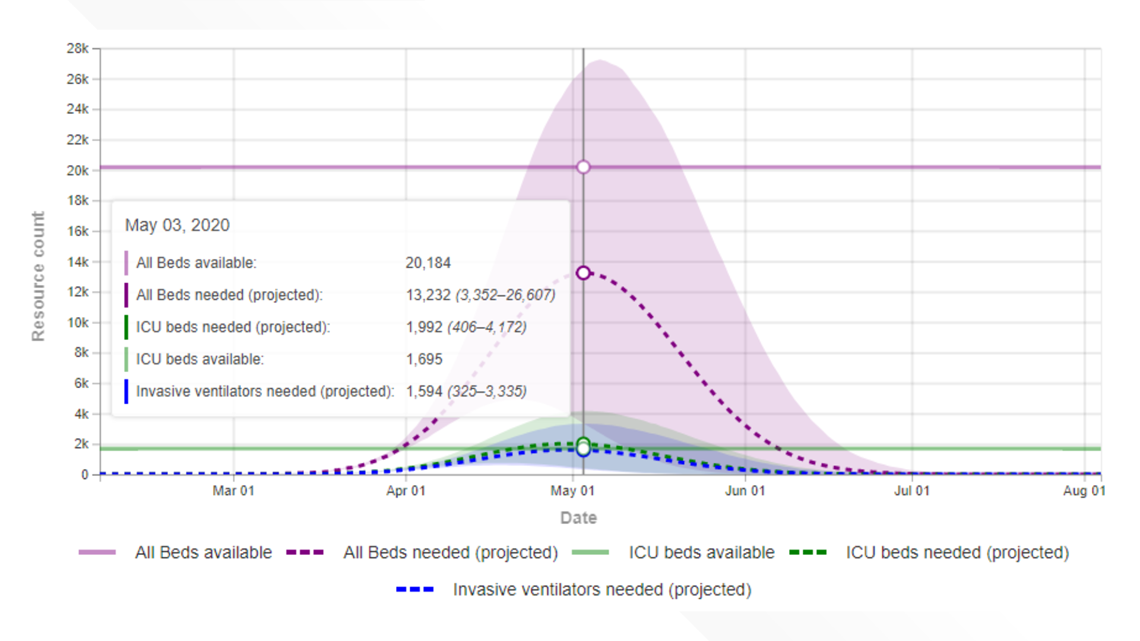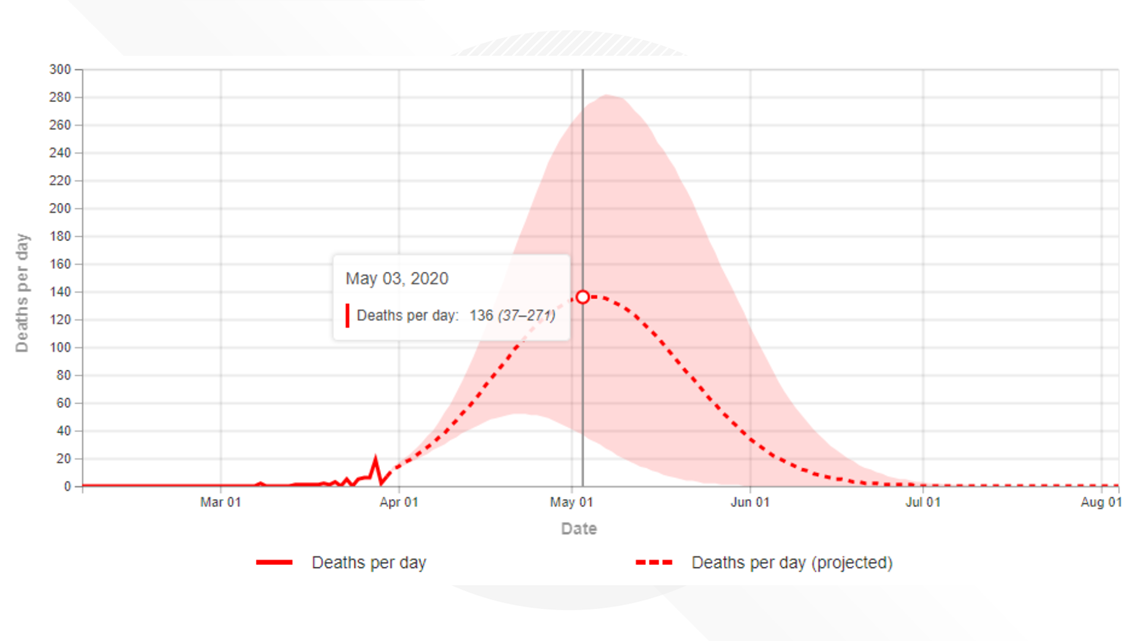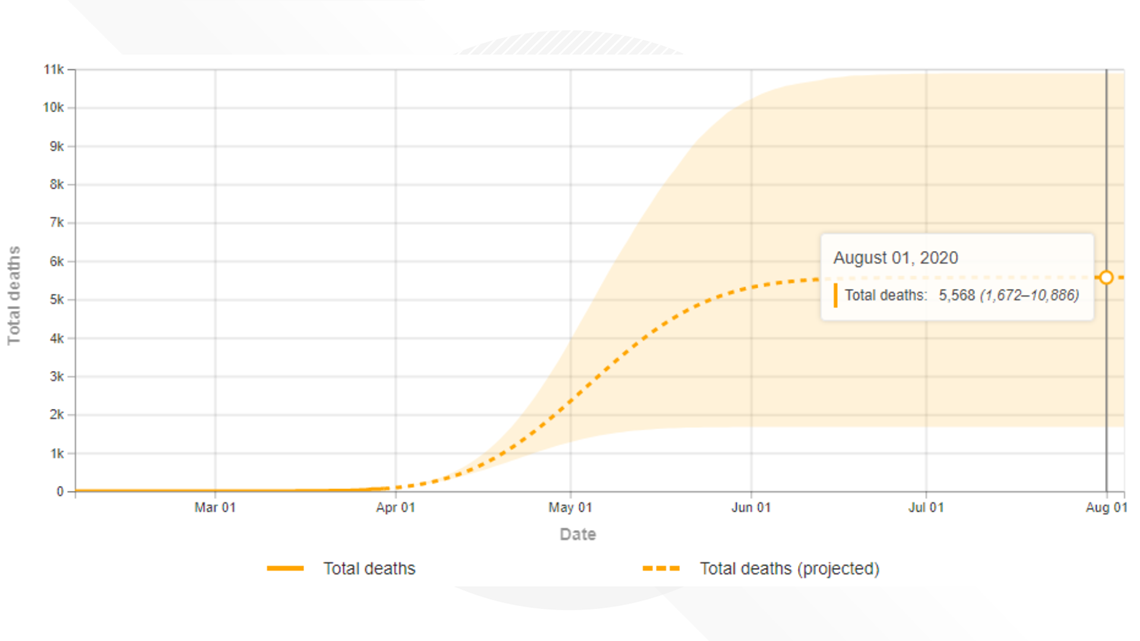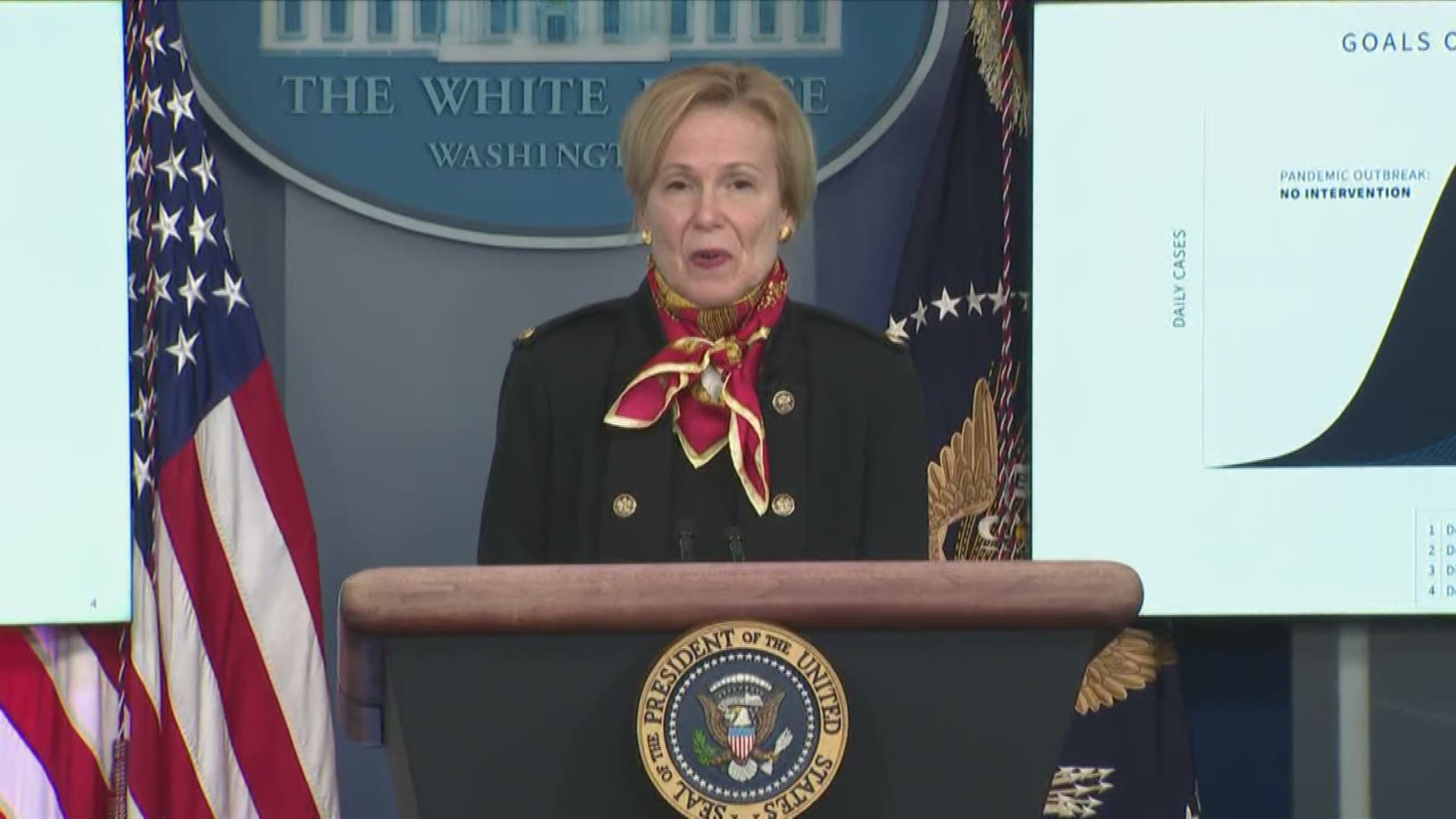ST. PETERSBURG, Fla. — A model by the University of Washington's Institute for Health Metrics and Evaluation and cited by the White House Coronavirus Task Force shows Florida's COVID-19 coronavirus peak might be a month away.
This shouldn't be a period of time for state leaders to sit on their hands, scientists say. Rather, experts say they need to act now: Execute a statewide stay-at-home order, close all non-essential services and severely limit travel.
Each hasn't yet been ordered by Florida by Gov. Ron DeSantis, who implemented a stay-at-home order for South Florida and has continued to stress people should follow the guidelines by the White House Coronavirus Task Force and Centers for Disease Control and Prevention: This includes avoiding groups of 10 people or more.
The university model shows Florida's peak could come on May 3 -- the day when the state could reach the maximum number of hospital beds, ICU beds and ventilators needed -- with the potential for thousands of people dead.
The model assumes "the continuation of strong social distancing measures and other protective measures," which are items Florida as a whole has not yet enforced as much as other states.
About 13,232 hospital beds will be necessary at the height of the pandemic, the model projects, which could be considered "good news" as the model reports there only are 20,184 beds available. But there is a range to the data: The number of hospital beds needed could be as low as 3,567 or as high as 26,259 in an extreme case -- that would surpass the 20-thousand breaking point.
Florida could experience a shortage of 297 ICU beds at its peak and in total, 1,594 ventilators are needed.


"These estimates can help inform the development and implementation of strategies to mitigate this gap, including reducing non-COVID-19 demand for services and temporarily increasing system capacity," IHME Director Dr. Christopher J.L. Murray said in the description of the modeling project. "These are urgently needed given that peak volumes are estimated to be only three weeks away."
"The estimated excess demand on hospital systems is predicated on the enactment of social distancing measures in all states that have not done so already within the next week and maintenance of these measures throughout the epidemic, emphasizing the importance of implementing, enforcing, and maintaining these measures to mitigate hospital system overload and prevent deaths."
Florida's coronavirus death toll through March has ranged anywhere from none each day to as many as 19, though it has been more than a week since a day has gone by without any reported deaths.
By the May 3 peak, Florida could experience 136 people dying each day due to coronavirus. The model also provides a range for this day, with as few as 37 people dying per day or up to 271 deaths per day.


And to begin the month of August, a couple of months after when the pandemic is estimated to wind down statewide, the death toll could be as high as 10,886 people or as few as 1,672 people.


This model from the University of Washington isn't the only one policymakers are using to base decisions on social distancing, travel and other measures. Dr. Deborah Birx, the White House coronavirus response coordinator, said President Donald Trump's decision to extend social distancing guidelines until April 30 was rooted in the data of 12 different models, according to CNN.
Birx said the University of Washington model "ended up at the same numbers."
"We want to help [policymakers] figure out when their worst week will be and to prepare accordingly, however they can," Murray told Wired.
- Pastor arrested, accused of violating 'safer-at-home' order by holding Sunday services
- 'Pandemic' scientist says his team has discovered potential cure for COVID-19
- Schools in Florida to remain closed through May 1 because of coronavirus
- After 'Tiger King': Florida sheriff getting daily tips about Don Lewis cold case
- Stay-at-home vs. shelter-in-place: Here's what they mean
- Evictions continue in the midst of COVID-19 pandemic
- Hotlines, websites offer the latest on COVID-19
FREE 10NEWS APP:
►Stay In the Know! Sign up now for the Brightside Blend Newsletter



